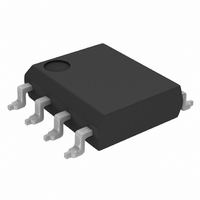LM75AIMX/NOPB National Semiconductor, LM75AIMX/NOPB Datasheet - Page 10

LM75AIMX/NOPB
Manufacturer Part Number
LM75AIMX/NOPB
Description
IC TEMP SENSOR WATCHDOG 8-SOIC
Manufacturer
National Semiconductor
Specifications of LM75AIMX/NOPB
Function
Temp Sensor, Watchdog
Topology
ADC (Sigma Delta), Comparator, Register Bank
Sensor Type
Internal
Sensing Temperature
-55°C ~ 125°C
Output Type
I²C™
Output Alarm
Yes
Output Fan
Yes
Voltage - Supply
2.7 V ~ 5.5 V
Operating Temperature
-55°C ~ 125°C
Mounting Type
Surface Mount
Package / Case
8-SOIC (3.9mm Width)
Temperature Sensor Function
Temp Sensor
Interface Type
Serial (2-Wire)
Resolution
9b
Package Type
SOIC N
Operating Temperature (max)
125C
Operating Temperature Classification
Military
Operating Supply Voltage (min)
2.7V
Operating Supply Voltage (typ)
3.3/5V
Operating Supply Voltage (max)
5.5V
For Use With
OM6285 - EVAL BOARD I2C-2002-1A568-4002 - DEMO BOARD I2C
Lead Free Status / RoHS Status
Lead free / RoHS Compliant
Other names
LM75AIMX
Available stocks
Company
Part Number
Manufacturer
Quantity
Price
Part Number:
LM75AIMX/NOPB
Manufacturer:
TI/德州仪器
Quantity:
20 000
www.national.com
1.9 O.S. POLARITY
The O.S. output can be programmed via the configuration
register to be either active low (default mode), or active high.
In active low mode the O.S. output goes low when triggered
1.10 INTERNAL REGISTER STRUCTURE
There are four data registers in the LM75A and an additional
Product ID register selected by the Pointer register. At power-
up the Pointer is set to “000”; the location for the Temperature
Register. The Pointer register latches whatever the last loca-
tion it was set to. In Interrupt Mode, a read from the LM75A,
or placing the device in shutdown mode, resets the O.S. out-
put. All registers are read and write, except the Temperature
register and the LM75A's Product ID register, which are read
only.
A write to the LM75A will always include the address byte and
the Pointer byte. A write to the Configuration register requires
one data byte, and the T
data bytes.
Reading the LM75A can take place either of two ways: If the
location latched in the Pointer is correct (most of the time it is
expected that the Pointer will point to the Temperature regis-
OS
and T
HYST
registers require two
10
exactly as shown on the O.S. Output Temperature Response
Diagram,
the O.S. output.
ter because it will be the data most frequently read from the
LM75A), then the read can simply consist of an address byte,
followed by retrieving the corresponding number of data
bytes. If the Pointer needs to be set, then an address byte,
pointer byte, repeat start, and another address byte will ac-
complish a read.
The first data byte is the most significant byte with most sig-
nificant bit first, permitting only as much data as necessary to
be read to determine temperature condition. For instance, if
the first four bits of the temperature data indicates an overtem-
perature condition, the host processor could immediately take
action to remedy the excessive temperatures. At the end of a
read, the LM75A can accept either Acknowledge or No Ac-
knowledge from the Master (No Acknowledge is typically
used as a signal for the slave that the Master has read its last
byte).
Figure
4. Active high simply inverts the polarity of
1265820












